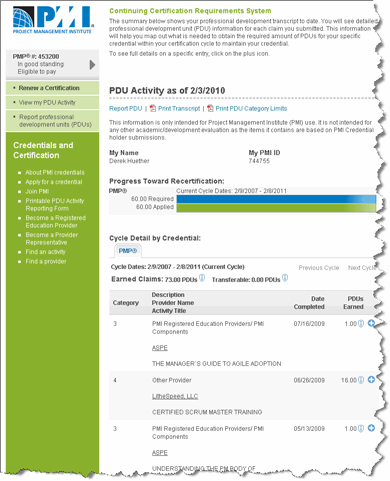People generally go to meetings because they are asked to attend. With a simple click of the mouse, they accept. Rarely do they respond to your request with the why did you invite me question. Some accept and just don't show up. These are contributing factors that sway a meeting from productive to unproductive. I sometimes see people go an entire day and only attend meetings. When do they get actual work done? We all know that answer.
Here are a few helpful hints for the next meeting you organize.
[1] Write out the purpose of the meeting with actionable events in mind. e.g. "Provide an updated status, identifying risks and opportunities, and identify new action items."
[2] Identify your attendee list but only keep those you can map to the actionable events listed in step 1. There is a difference between an attendee list and a communications distribution list.
[3] Create an agenda. Do not ever arrange a meeting without a written agenda. Your meeting will suffer scope creep in the worst possible way.
[4] Identify who will run the meeting and who will take notes. It should not be the same person.
[5] Circulate the completed agenda and collateral documentation prior to the meeting. Have some on hand in the event people don't bring their own copies to the meeting.
[6] Provide different means of attending the meeting. e.g. In person, via telephone, via web meeting.
[7] Start every meeting on time. If you don't start on time, how do you expect to finish on time?
[8] Ensure discussion points align to the agenda. If they don't, recommend taking the topic to another forum.
[9] End the meeting by having the note taker read back the discussion points and the understood action items.
[10] Send out the meeting minutes within one to two days.
Here are a few helpful hints for the next meeting you are invited to or attend.
[1] Upon receiving an invitation, ask yourself if it is really necessary to attend this meeting. It could be you just need to be kept informed. Ask to be included on the meeting minutes distribution list rather then attending.
[2] If you are going to attend, arrive on time! It is rude to walk into a meeting after it has started. Have a little respect for the other attendees. They found it important enough to arrive on time, why can't you?
[3] Know which agenda items pertain to you prior to coming to the meeting. Be prepared.
[4] Verify the published meeting minutes for accuracy.
I hope this helps you get the most out of your project meetings. As an added bonus, I am including a link to my free Meeting Minutes Template. You can also find it by navigating to my Free PM Templates page.
I welcome your feedback and suggestions.
Regards,
Derek



